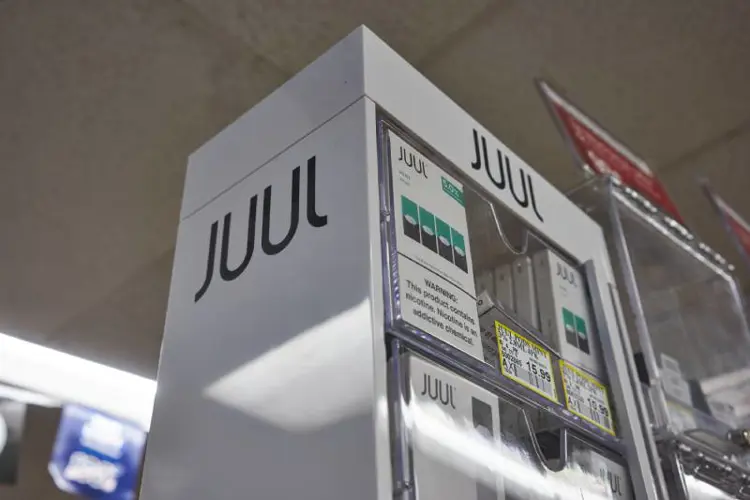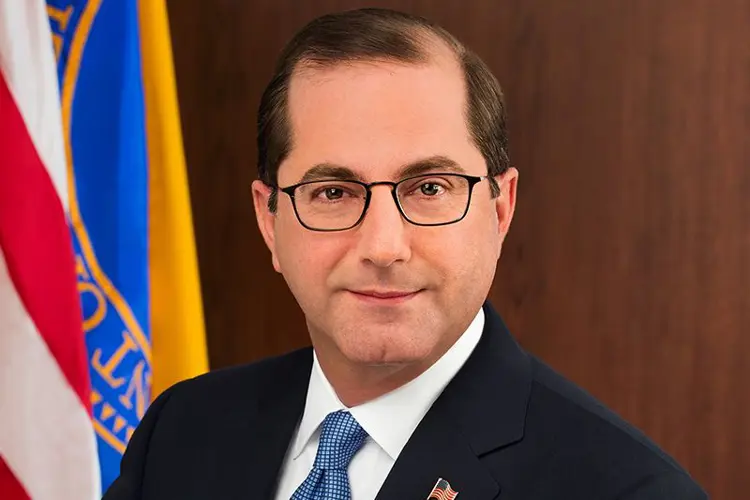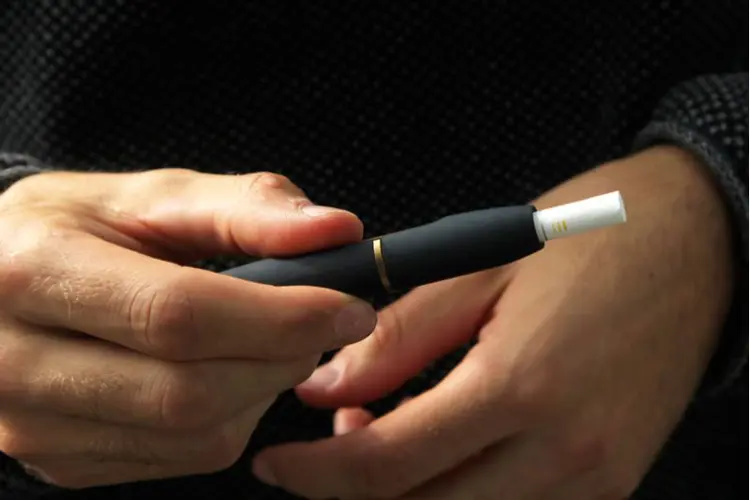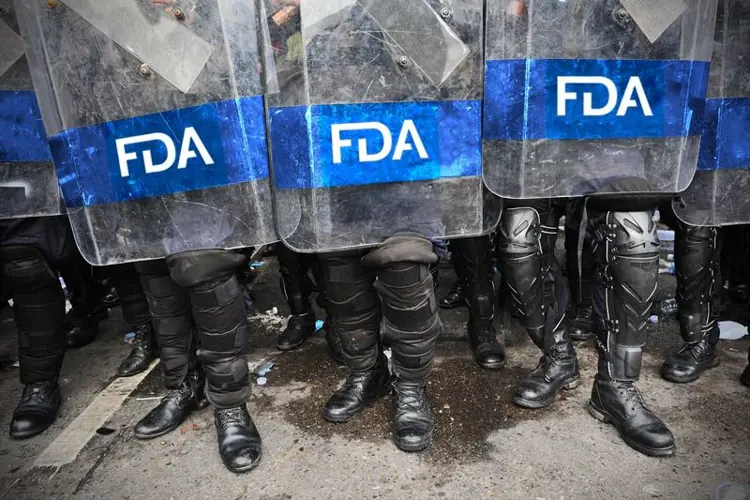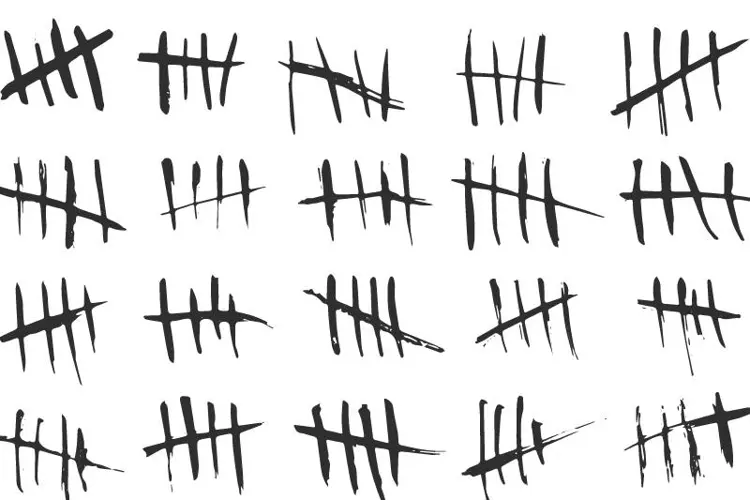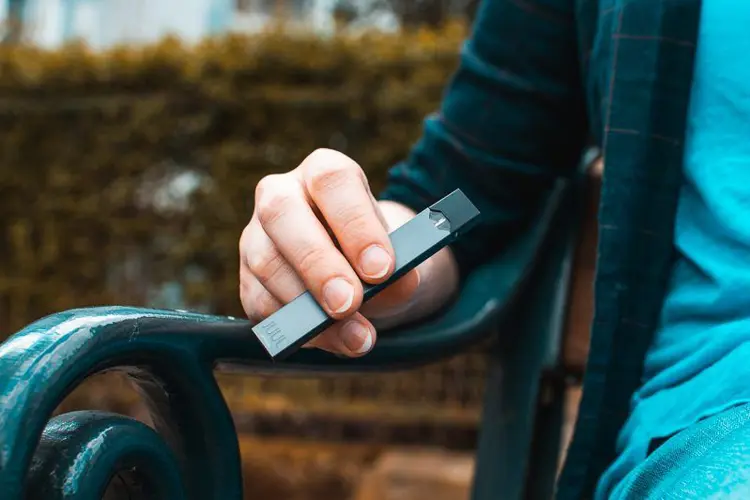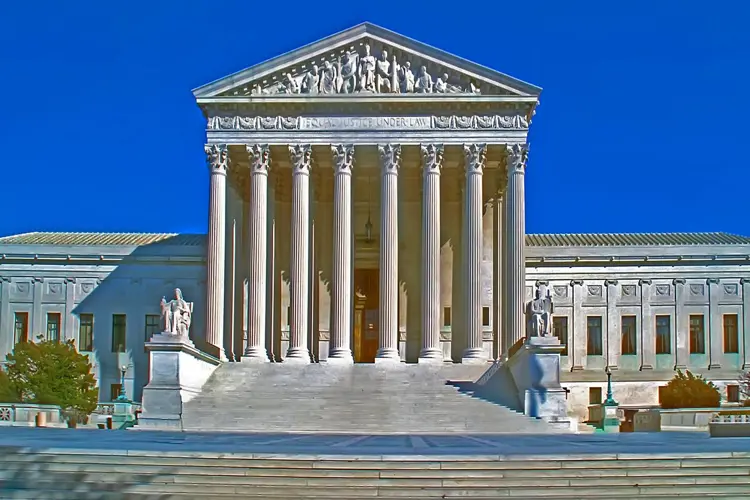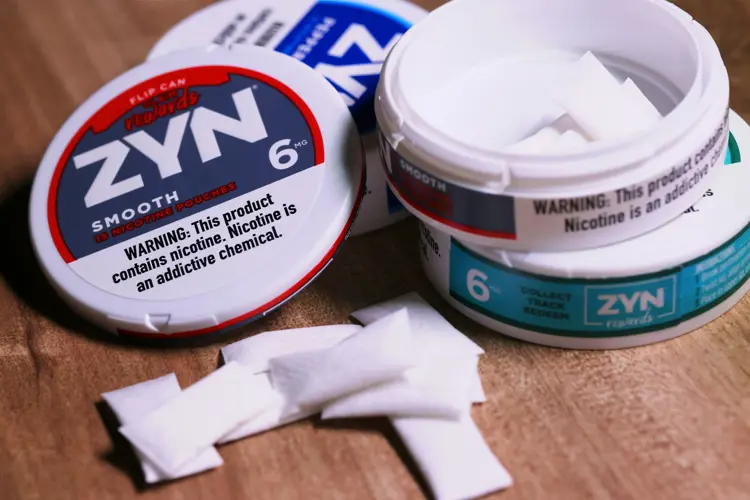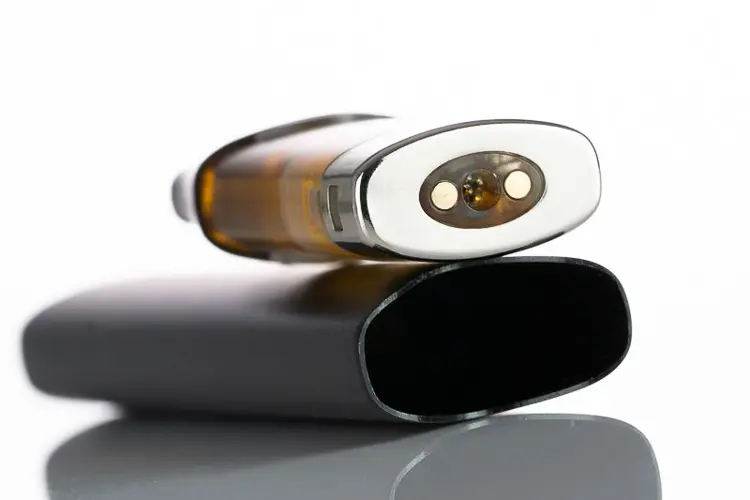Sept. 7, 2020
After Sept. 9, 2020, the only vaping products that can be legally sold in the United States will be products approved for marketing by the FDA Center for Tobacco Products, or submitted to the agency and accepted for further review. The submission process is called a Premarket Tobacco Application, or PMTA. The actual deadline to submit is at 4:00 p.m. on Sept. 9.
How the PMTA deadline will affect the lives of vapers and the businesses that serve them has been the subject of a lot of speculation, starting when the PMTA deadline was first announced in 2016. But as the date has gotten closer—and is now just a day away—the questions, arguments, guesses, misinformation, fear, anger, and despair in the vaping community have multiplied and exploded.
The simple fact is that no one knows what will happen immediately after Sept. 9, or what will happen next week, next month, or next year—or, rather, no one knows everything that will happen. Some things we know, and others we can make educated guesses about. Some things we won’t know until they happen, and some of those things depend on other things we also don’t know.
It is confusing and maddening, but there’s no need for vapers to despair. If you pay attention to what’s happening, you should be able to continue vaping, even though some things will change and there will probably be some inconveniences. Unfortunately, the future may be dark for some small vape businesses, and many will probably become cherished memories.
What is the PMTA, and how was the deadline decided?
The PMTA process is mandated by the Family Smoking Prevention and Tobacco Control Act (TCA), which became law in 2009. The TCA was negotiated by members of Congress, Campaign for Tobacco-Free Kids president Matthew Myers, and lawyers from tobacco giant Philip Morris (now called Altria). It grandfathered all tobacco products that were sold before Feb. 15, 2007 onto the market, and set up a series of pathways to approval for new products.
The law protects cigarettes, which was the primary goal for the Philip Morris negotiators. It also makes bringing new, lower-risk products to market difficult, by setting a very high bar for FDA approval. Potential competitors to cigarette companies must prove that their products are “appropriate for the protection of public health.” Since uptake of smoking by youth was already declining when the TCA was written, the tobacco control leaders that supported the law were willing to trade protection of current products for rules that would make it as difficult as possible for new tobacco products to enter the market.
Although the law was not passed until 2009, the negotiations had been completed years before. E-cigarettes were not on anyone’s mind when the final draft of the TCA was agreed upon by all the negotiating parties in early 2007. Vaping products were largely unavailable in the United States until later that year, and weren’t noticed by public health or tobacco control groups until 2008.
The TCA created the FDA Center for Tobacco Products (CTP), which was given the task of regulating cigarettes, roll-your-own tobacco, and smokeless tobacco. Congress also gave the CTP the power to “deem” additional products (containing nicotine “made or derived from tobacco”) to be tobacco products, which would then bring them under CTP’s regulatory authority. On May 5, 2016 the agency issued the Deeming Rule and captured e-cigarettes, cigars, pipes and pipe tobacco, and hookah products.
The “newly deemed” products that existed on the market before the 2007 grandfather date—a substantial portion of cigars, pipes and pipe tobacco, and hookah products—could continue to be sold without a retroactive approval from the FDA. But no vaping product had been on the market before that date.
That meant that all e-cigarette manufacturers would have to submit applications to the CTP proving that their products—including all components and parts—were “appropriate for the protection of public health,” and thus allowed to remain on the market.
The deadline for submitting PMTAs for existing products was set for Aug. 8, 2018, and the market was frozen on Aug. 8, 2016. Manufacturers wishing to introduce new products after that date were required to seek and receive PMTA approval before selling them. (That is still the case. Only products that manufacturers can prove were sold before the August 2016 cutoff can remain on the market while the FDA considers their PMTAs submitted before Sept. 9.)
The PMTA deadline has changed several times. Two of the changes were notable. On July 28, 2017, newly appointed FDA Commissioner Scott Gottlieb shocked both the vaping community and the powerful anti-vaping tobacco control organizations by pushing the deadline back four years, to Aug. 8, 2022.
In 2018, a group of tobacco control organizations led by the American Academy of Pediatrics sued the FDA, claiming that Gottlieb had changed the deadline without going through the usual agency process mandated by the Administrative Procedure Act. In 2019, federal Judge Paul Grimm agreed and gave manufacturers 10 months to submit PMTAs, setting the new deadline to May 12, 2020. Judge Grimm shortened the period a product under FDA review may stay on the market to one year. He also gave the agency the ability to make exceptions to PMTA requirements on a case-by-case basis.
This spring, the FDA appealed to the court toallow a 120-day delay because of challenges posed to applicants and the FDA by the coronavirus pandemic. Judge Grimm granted the delay, and the deadline date changed to Sept.9.
The PMTA process is deliberately difficult
The FDA purposely crafted the Deeming Rule to frighten off small vaping businesses. The PMTA process was presented as a “shock and awe” nightmare that no company without millions of dollars to waste would dare take a chance on. It was designed to especially discourage manufacturers of bottled e-liquid and open-system products (devices that use interchangeable parts).
The FDA Center for Tobacco Products was created in 2009 with the mission of policing a few large tobacco companies. The new tobacco regulators didn’t like the tobacco industry, but they knew that the large corporations, with their stockholders and armies of compliance lawyers, would be good regulatory citizens. On the other hand, the agency looked in horror at the sprawling, messy vaping industry, with thousands of companies and millions of products, and knew it would be impossible to regulate effectively.
Because there are hundreds of thousands of open-system devices (and components and parts), and because all of them can be used in an endless number of combinations with other “tobacco products” (including millions of e-liquid SKUs), it would be impossible to submit applications that accounted for all the possibilities.
Most small American vape manufacturers make e-liquid. To comply with the requirements described in the Deeming Rule, they would have to test each of their products in every combination of refillable atomizer and variable-voltage or -wattage mod available on the market—or at least a wide enough variety to cover all the types available, and at every possible possible power range. Each separate combination of devices would have to be proven “appropriate for the protection of public health,” and each PMTA would require research and analysis costing millions of dollars.
The FDA estimated in the 2014 Deeming Rule draft that it would receive PMTAs for 50 SKUs in the first two years (this was later upped to 750 SKUs). The agency also provided no guarantee of approval. Small manufacturers might mortgage their houses and cash in their retirement accounts to complete a single application, only to have it rejected without explanation. The agency predicted in the Deeming Rule that there would be “considerable product consolidation and exit” from the market. In fact, if only 50 applications were submitted, it would mean the independent industry had already been destroyed.
Clearly, the FDA did not expect small manufacturers to attempt to comply with the PMTA process. Indeed, that was the intention. The agency deliberately constructed the Deeming Rule and the PMTA process to scare away small companies from even trying to comply.
But what would the agency do if small players called their bluff and insisted on trying anyway?
What does a PMTA submission include?
The PMTAs that have been approved so far—for certain Swedish Match snus products, and the Philip Morris International heated tobacco product IQOS—have been submitted by large tobacco companies, and were the result of many years of research, and billions of dollars spent. That was certainly the intention behind the Deeming Rule—to make the process as daunting as possible.
The “public health test”
According to the Tobacco Control Act, an applicant’s purpose is showing that their product has a net benefit to the whole public health. That is reiterated in the CTP’s final industry PMTA guidance:
“FDA’s finding of whether there is a showing that permitting a product to be marketed would be appropriate for the protection of the public health (APPH) must be determined with respect to the risks and benefits to the population as a whole, including users and nonusers of the tobacco product, and taking into account:
“(A)the increased or decreased likelihood that existing users of tobacco products will stop
using such products; and
“(B) the increased or decreased likelihood that those who do not use tobacco products will
start using such products.”
Proving that the “tobacco product” you’re submitting for approval will not cause non-users—especially adolescents, who are the primary concern of the FDA—to take up nicotine use is a very difficult thing to do. Likewise, showing that it is likely to promote cessation of all tobacco products (including the one you want to sell) requires extensive—and expensive—science.
For a large tobacco company, scientists can be hired and assigned to design surveys and studies of large groups to use as evidence that their products do not appeal to youth and non-users. Other scientists and technicians can study the physical properties of the product, including arcane measures like the vapor particle size, and difficult-to-assess risks posed by specific flavoring constituents. But for a small independent company, such science is probably beyond their capacity.
Example: the research findings summary
Explaining everything that the FDA recommends be included in a PMTA is beyond the scope of this article. However, the following snippet from the industry guidance document offers a pretty good idea of how demanding the process is—especially for a small business. This is the agency’s suggestion on how to structure just the summary of research that has been completed.
FDA recommends “that your PMTA contain a well-structured summary to provide FDA with an adequate understanding of the data and information in the PMTA, including the quantitative aspects of the data....
“(1) A summary of the nonclinical and clinical studies relevant to your PMTA, regardless of
whether you consider these studies favorable or unfavorable to the application. It would
be helpful to include the specific product or products that were studied and how those
products have similar characteristics (similar materials, ingredients, design, composition,
heating source, or other features) to the applicant’s product if used as a substitute or
supplement for data for the product….;
“(2) The relative health risks of the new tobacco product for both users and nonusers
compared to other tobacco products on the market (e.g., other ENDS, combusted
tobacco products such as cigarettes), including tobacco products within the same product
category as it may be expected that consumers of current products within the same
product category may switch to using a newly marketed product, and the health risks
compared to never using tobacco products;
“(3) The chemical and physical identity and quantitative levels of the emission of aerosols
under the range of operating conditions (e.g., various temperature, voltage, wattage
settings) and use patterns (e.g., intense and non-intense use conditions) within which
consumers are likely to use the new tobacco product;
“(4) The likelihood, based on the research information contained in your application, of
current nonusers of tobacco products initiating or reinitiating tobacco use by using the
new tobacco product;
“(5) The likelihood, based on the research information contained in your application, that
consumers will adopt the new tobacco product and then switch to other tobacco products
that may present higher levels of risk, such as cigarettes;
“(6) The likelihood, based on the research information contained in your application, of
consumers using the new tobacco product in conjunction with other tobacco products;
“(7) The likelihood, based on the research information contained in your application, of
current tobacco product users switching to the product instead of ceasing tobacco
product use or using an FDA-approved tobacco cessation product (because use of ENDS
products includes inherent risk above quitting altogether or the use of an FDA-approved
nicotine-replacement therapy (NRT));
“(8) Assessment of abuse liability (i.e., the addictiveness, abuse, and misuse potential of the
new product and the exposure to nicotine during product use);
“(9) Assessment of user topography (how individual users consume the product, e.g., the
number of puffs, puff duration, puff intensity, duration of use), the frequency with which
consumers use the product, and the trends by which users consume the product over
time; and
“(10) A discussion demonstrating how the data and information contained in your PMTA
establish that permitting the marketing of the new tobacco product would be APPH.
The agency goes on to suggest that, “As part of the discussion in item (10), FDA recommends that you provide an overall assessment of the effect that the new tobacco product may have on the health of the population as a whole. The assessment should synthesize all of the information regarding the product (as described in items numbered 1-9, above) and its potential effects on health, tobacco use behavior, and tobacco use initiation to infer the impact of the potential effect the product’s marketing may have on tobacco-related morbidity and mortality.”
That’s just the suggested contents of the summary of one part of the required submission. Juul Labs’ recently submitted PMTA contains “detailed scientific data from over 110 studies totaling over 125,000 pages evaluating the product’s impact on both current users of tobacco products and nonusers, including those who are underage.”
It’s easy to forgive the small independent manufacturers who have simply thrown their hands up and walked away. However, not every small company has given up.
Will e-liquid manufacturers survive the PMTA deadline?
Based on what we knew in 2016—or even 2018—it seemed unlikely that any small manufacturers would make it past the PMTA deadline. Many people (me included) didn’t believe bottled e-liquid makers had any chance at all of even submitting a viable application, no matter when the deadline was set.
Promoting a simplified PMTA process
However, vapers and vaping businesses have worked hard to be heard. And even though the dominant news media narratives about vaping are mostly negative, government regulators understand that denying every PMTA from every small business would make them look like stereotypically heartless bureaucrats and leave them with an unenforceable mess of a black market.
Some independent vaping industry advocates—most notably Arizona-based Jvapes co-owner Amanda Wheeler and Washington, D.C. regulatory attorney Azim Chowdhury—have been in contact with the FDA and the Department of Health and Human Services (HHS), attempting for almost a year to promote a simplified PMTA process for small businesses.
The FDA’s industry guidance includes some PMTA components that must be completed because they’re specified in the Tobacco Control Act (statutory requirements). Much of the guidance, however, is not required by the TCA, but is just that: guidance.
“FDA’s guidance documents, including this guidance, do not establish legally enforceable
responsibilities,” says the agency in the industry guidance. “Instead, guidances describe the Agency’s current thinking on a topic and should be viewed only as recommendations, unless specific regulatory or statutory requirements are cited. The use of the word should in Agency guidances means that something is suggested or recommended, but not required.”
For example, there is no need for every small vaping business to reinvent the wheel and independently prove that their e-liquid—when used by their intended adult smoker or ex-smoker customers—is less harmful than smoking. Because the products small manufacturers sell are essentially the same, and their relative safety has already been shown in extensive peer-reviewed research, a robust literature review should be allowed to substitute for thousands of duplicative studies. (In fact, there are already multiple expert literature reviews on vaping science to draw from, including the 2018 review by the National Academies of Sciences, Engineering and Medicine, which was commissioned by the FDA.)
Wheeler and Chowdhury have asked the agency to accept simplified PMTAs from small manufacturers, which would be submitted in two parts, with many of the most challenging and expensive components, including toxicity testing, submitted at a later date.
The plan has gotten some attention, especially at the Department of Health and Human Services (HHS) and the White House. And while the FDA has tried to stay “insulated from the politics,” says Wheeler, the bureaucrats at HHS are less wedded to supposed scientific purity and more interested in finding a common-sense solution to a thorny problem. After all, HHS Secretary Alex Azar promised in January to create a “streamlined” PMTA process for small manufacturers—something he hasn’t delivered.
“My advice for months has been to turn in whatever you can by the September 9th deadline, because in the conversations we’ve been having we believe there will be changes after September 9th,” Wheeler told Vaping360. Her company is submitting a PMTA covering 98 of its e-liquid products, including unflavored.
According to Wheeler, the FDA has received direction from the White House and HHS to try to accommodate the small vapor companies without abandoning its scientific standards. That’s tricky, but remember that Judge Grimm gave the agency the ability to make case-by-case exceptions.
“They told the FDA to do this in such a way that they don’t wipe out all the small businesses, but to do that in a way that doesn’t stray too far from the original guidance,” she says. “And I don’t know—if you’re the FDA and you have the White House telling you this—how you [can] resolve that conflict except through the application review process.
“I don’t expect them to issue any major changes to the requirements. But what I expect is that they’ll do it quietly in their review process.”
Whether the FDA can make concessions to small vapor interests “quietly” is questionable. The same anti-vaping lobbying groups that successfully sued the agency to move the PMTA deadline up two years are now organizing to oppose any weakening of the standards mandated in the Deeming Rule.
An August Campaign for Tobacco-Free Kids press release hyped a document issued by the special interest groups titled “PRINCIPLES TO GUIDE FDA PREMARKET REVIEW OF E-CIGARETTES AND OTHER DEEMED PRODUCTS.” The groups demand that the FDA make submitted PMTAs accessible to the public, that the most stringent of the FDA’s guidance recommendations be enforced with an iron hand, and that no flavored vaping products should ever be allowed.
YouTube vape reviewer and advocate Matt Culley thinks the FDA will have to approve some e-liquids. But, he says, “The antis will freak out if a flavored product gets approval.”
Indeed, the anti-vaping groups are still steaming over the Obama White House’s decision to remove a full flavor ban from the 2016 Deeming Rule. They will turn themselves inside-out, if necessary, to prevent a flavor ban from getting away again.
More small companies are taking the plunge
Word about Amanda Wheeler’s proposed “PMTA-lite” spread, and other small manufacturers decided to use her plan as a template and pursue PMTA approval. A number of dedicated volunteers—notably Texas vape shop owner Char Owen—in a private Facebook group have worked tirelessly with board members of the Smoke Free Alternatives Trade Association (SFATA) to help many small e-liquid companies put together applications they believe the FDA will have to take seriously.
“So when we [Wheeler and Azim Chowdhury] did the plan, I initially wasn’t working with anyone,” says Wheeler. “Azim had a pretty good idea of what was acceptable to turn in by September 9th and what wasn’t, and working with Char Owen’s group we were able to [add elements] that we could complete on time. Char, Lindsay Stroud and others from SFATA, they’re out there doing all the legwork, partly with help from Azim on cover letters, environmental assessments and stuff, to make that part of the PMTA accessible [to small businesses],” says Wheeler.
A full-blown PMTA with all the testing and a custom literature review prepared by professionals would not be possible for the small manufacturers in the Facebook group. Even if they could scrape together, say, a half-million dollars to pay consultants and labs, there is no guarantee the FDA will accept it. But using Wheeler and Chowdhury's model and Char Owen's templates, the cost is low enough that many small business owners are willing to roll the dice.
“I think it costs about $1,300—and a whole lot of time you have to spend doing these documents,” says Wheeler. Hundreds may submit applications using the crowd-sourced PMTA plan.
“Thanks to that Facebook group, it became a possibility for us,” one small e-liquid company told me in a message. “Now we just need available labs with reasonable fees. We can hope!”
The Facebook group is an odd combination of friendly chatter and compliance expertise. The Files tab is filled with terms only a tobacco regulatory expert would understand, but the people accessing it are doing it while they help customers or get their kids ready for daycare. You can’t help but root for these small business owners who never wanted anything except to make a decent living helping people quit smoking—just like they had. They’re the exact opposite of the cynical opportunists portrayed in Matthew Myers’ and his cronies’ press releases.
One current hot-button issue in the group is the FDA’s questionable decision to update one of its computer programs just before the PMTA deadline. Some manufacturers are unable to access their product registration files—necessary for filing a PMTA—and getting help from the CTP is all but impossible. It’s a typical problem for “tobacco companies” too small to have a compliance department that deals directly with the federal agency. No one will be surprised if the final rush of PMTA submissions crashes the FDA’s primitive servers.
Similar Facebook groups were created to meet previous compliance deadlines of the Deeming Rule, and many of the same people are in this one. The members began the process together, figuring how to make compliant labels and register products. Now they’re bound by the time and effort they’ve put into the long-shot possibility of joining Philip Morris as members of the PMTA club.
Some, says Wheeler, are probably just looking for an extra few months on the market to make some money while they wind down their businesses.
“Some companies will be content with that, because they’re tired,” she explains. “They just want what extra time they can get from FDA, and then they’re done. But there will be another group of companies that want to figure out how to go the rest of the distance. People like Lindsay and Char and SFATA and me will put our heads together and try to figure out how we can help companies address all the deficiencies. So I’ll keep working with [the FDA] to try to convince them to see things from our perspective and cut us some slack. And I know that Char is not going to give up until she figures how to get market approval.”
There’s a nervous excitement in this group. They know the odds are stacked against them, but they want to see what happens. And recent FDA statements have given them a glimmer of hope.
Is the FDA offering a path forward for small companies?
The question for CTP tobacco regulators considering PMTAs for open-system products is whether and how to accommodate the small businesses that are not capable of providing applications that meet all of the agency’s exacting standards. Frankly, none of the small companies attempting to do PMTAs on their own will be able to produce much of the science recommended by the agency.
In some cases, like testing for harmful and potentially harmful constituents (HPHCs) in e-liquid,
there simply aren’t enough FDA-accredited labs to handle the crush of small companies trying to complete PMTAs. That’s not a new problem; companies have been unable to find available labs for over a year. Now the coronavirus pandemic has made the problem even worse. Some in the industry think it could take years to catch up.
A last-minute request for a six-month PMTA deadline delay—based on the roadblocks caused by the pandemic—from Azim Chowdhury on behalf of a group of small manufacturers and trade associations, was rejected by the FDA.
But there have been tantalizing signs from the CTP over the last two weeks that the agency has softened and will allow some small manufacturers to submit less-than-complete PMTAs, and at least remain on the market during the review period (which can last up to one year), or possibly even longer. The FDA was granted permission by Judge Grimm to make such decisions on a case-by-case basis, and the agency seems to be signalling that it will.
In late August, FDA’s responses to manufacturers asking for a deadline extension began adding language that offered some hope for small e-liquid makers with incomplete applications.
"However, FDA intends to take individual circumstances into account as it considers your premarket tobacco product applications that are submitted by the September 9, 2020, deadline,” says the CTP response. “During review of an application, FDA will determine whether it meets the applicable statutory and regulatory requirements under sections 905 and 910 of the Federal Food, Drug, and Cosmetic Act, including final regulations at 21 C.F.R. Parts 1105 and 1107, for your application to be accepted and filed and proceed to scientific review. FDA encourages you to explicitly identify any content that may be missing from your application and clearly explain how COVID-19, a recent natural disaster, or other unforeseen circumstance has affected your ability to provide such information.”
The small number of laboratories available to do product testing and the financial and logistics challenges to all businesses posed by the coronavirus pandemic certainly should qualify as unforeseen and unavoidable circumstances. The demand for testing has outstripped the capacity of the labs in the U.S. accredited to perform the specific assessments called for in the CTP’s industry guidance. That’s unavoidable too.
“If your application is sufficient to be accepted, filed, and proceed to scientific review and, during such review, you subsequently provide the needed information and make substantial progress toward addressing deficiencies in your application, we intend to take that into account in deciding whether to initiate enforcement action against your products for being on the market without premarket authorization, even where FDA is reviewing your application after September 9, 2021. The decision as to whether to enforce after the one-year review period may take into account your responsiveness to our requests, the particular nature and extent of scientific evidence that is lacking, and evidence of demonstrated hardship due to the COVID-19 pandemic, recent natural disasters, or other unforeseen circumstance in obtaining such evidence." (Emphasis added.)
The CTP regulators appear to be saying that small businesses that take the deadline seriously, and make a good faith effort to complete as much of the work as possible, may avoid enforcement, even if the agency has not completed review of their application when the one-year grace period is up.
On Aug. 31, CTP Director Mitch Zeller issued a statement that got a lot of vaping industry attention. Noting that more than 400 million products were registered in the FDA system, Zeller said, “Even if applications are submitted for only a portion of those products, the likelihood of FDA reviewing all of these applications during the one-year review period is low.”
For applications that are immediately flagged for not containing the basic requirements to move to substantive review, Zeller says the agency may not reject them out of hand, but offer an opportunity to fix problems. He notes that “although we expect high quality and complete applications to come in by Sept. 9, if we do find deficiencies, it is likely FDA will issue a Deficiency Letter with a 90-day deadline for companies to respond.”
That may not amount to more than a 90-day delay, but it's 90 days the business didn't have before, and they may be able to stretch that out by asking for more time.
It’s as close as the FDA will come to formally granting the leeway Wheeler and Chowdhury asked for, and it’s more forgiving than most vape industry observers ever thought the agency would be with open-systems manufacturers.
Wheeler is optimistic but not overly so. She thinks the FDA may forgive shortcomings from some small companies—but that still means some will be left out.
“I wouldn’t even be surprised if the FDA is waiting to see what they get in from small business and kind of take an average,” she said. “Where’s the cutoff point in what we receive from these small businesses that’s not going to slaughter all of them? Like in school when they grade on a curve. I suspect they’re going to see what they get, and take a benchmark of where small business is, and I think they’re going to grade it on a curve.”
“I think once we get into the review process,” Wheeler says, “when the FDA is going back and forth with companies over what they’ve submitted and what they expect, I think it’ll be very interesting to see what they decide to mess with us over and what they don’t. There’s so much work that will have to be done after September 9th.”
Despite all the work that Wheeler and others have done, no one knows if the CTP will approve any flavored products. Doing so would be tantamount to the FDA starting a war with Campaign for Tobacco-Free Kids and their allies. And yet, without offering a variety of flavors it's doubtful any small e-liquid company would survive.
How will the PMTA deadline affect vape hardware?
The FDA and manufacturers alike have largely ignored the rules for hardware manufacturers laid out in the Deeming Rule. After the Aug. 8, 2016 cutoff date for bringing new products to market, new products continued to flow into the United States from the Chinese manufacturers in Shenzhen.
Each of the major Chinese vape manufacturers has announced PMTA submissions for a small number of products. Will any standalone refillable product be approved? We really have no information on which to base an opinion.
As for enforcement, it’s almost impossible to envision the FDA making a serious attempt to cut off the flow of vaping products coming in from overseas. That doesn’t mean the agency won’t try, but it would require a huge expenditure of time and resources with no real payoff. Surely the FDA understands that as long as there is e-liquid to vape people will find a way to get hardware to vape it with.
Doing nothing in regard to Chinese open-system hardware would certainly be the least problematic route for a regulatory agency that has, so far, been unable to stop the most glaringly obvious gray market of prefilled pods and disposable products. Flashy-colored prefilled small vapes are being sold in convenience stores across the country, and these products constitute the FDA’s primary enforcement target.
If the FDA sticks to the enforcement priorities laid out in its January 2020 guidance, the agency may never get around to standalone, refillable devices. The three priorities that earned a bullet-point were:
- “Any flavored, cartridge-based ENDS product (other than a tobacco- or menthol-flavored
ENDS product);
- “All other ENDS products for which the manufacturer has failed to take (or is failing to
take) adequate measures to prevent minors’ access; and
- “Any ENDS product that is targeted to minors or whose marketing is likely to promote use of ENDS by minors.”
Below those the FDA added, “Further, FDA intends to prioritize enforcement of any ENDS product that is offered for sale after September 9, 2020, and for which the manufacturer has not submitted a premarket application (or after a negative action by FDA on a timely submitted application).”
It’s not impossible, but it’s hard to see a situation where all the primary enforcement targets have been cleared from the market, and the FDA decides to go after the latest mods flying in from China. Would the FDA attempt to cut off shipments from China with the help of U.S. Customs authorities? That’s something American Vaping Association President Gregory Conley calls an “open question.”
An issue the FDA probably doesn’t want to get bogged down in is the fact that the same devices used to vape nicotine are used to vape CBD, which the agency doesn’t regulate (yet). Do FDA tobacco regulators want the headache of sorting out which mods and atomizers arriving from China are intended to be marketed for nicotine? Conley suggests hardware manufacturers use the confusion to their advantage.
"Any manufacturer selling a vaping product that does not contain nicotine—including standalone devices—would be wise to put a label on their products that reads something to the extent of, 'This product is not intended or expected to be used with nicotine,'” he says. “While hardly a guarantee that it will preempt attempts at enforcement, it is a good idea to establish now that your products are intended for the non-nicotine market."
The bottom line? Hardware PMTA enforcement almost has to be put in the “we’ll see what happens when it happens” category. And it may never happen. Even if it does, enforcement of imports will target products intended to be sold in the U.S., and won’t affect individual vapers who order products for personal use from Chinese retailers.
Will vape shops survive after the PMTA deadline?
The major immediate risk to vape shops is probably the owners’ own uncertainty. It’s very hard for a business owner to plan for the future when the future is almost impossible to forecast. More vape shops have been closing than opening for at least two years, as the vaping marketplace has been hit with a series of major shocks:
- The Deeming Rule launch in 2016
- The 2018 Juul panic
- Last year’s outbreak of lung injuries caused by adulterated black market THC oil vapes, and the temporary sales bans that followed in several states
- Flavor bans in several northeastern states and municipalities throughout California
- Tobacco 21 laws
- New state taxes
- The 2020 coronavirus pandemic, which forced many shops to close temporarily, and a substantial number to remain shuttered
For many vape shops, the PMTA deadline is just one more jolt to the solar plexus. They’re not going to be forced to immediately shut down by the PMTA deadline, but it’s yet another storm of uncertainty moving closer on the horizon. Living in constant doubt is difficult—for employees too.
Vape shop business plans are clouded in uncertainty
“It is hard to operate that way, explaining to employees, ‘Hey we’re gonna keep going for as long as we can,’” says Matt Culley. “In 2016, it was the fear and uncertainty that hit the industry the most. You’re going to see a lot of exits that way. The amount [of shop closures] due to the actual enforcement will probably be pretty minimal at the beginning.”
Greg Conley doesn’t think there will be any major FDA effort to enforce at the vape shop level, at least not immediately. But that doesn’t prevent shop owners from worrying about it.
“If you are faced with the prospect of renewing a multi-year lease with no provision permitting you to leave early, there may be reason to be trepidatious, but shutting down is generally not necessary,” Greg Conley adds.
Leases are a major reason vape shops close. Amanda Wheeler, who co-owns five vape shops and runs two state trade groups (in Arizona and Colorado) has seen many shops close permanently because the owners feared long-term commitment in the current regulatory and legislative environment.
“They can’t plan three years into the future to sign a lease, so they’re just going away,” she said. “People are so unsure what’s going to happen that they’re closing just over uncertainty. It’s terrible.”
The worst thing that could happen would be immediate panic buying, followed by a long lull in business. That’s what happened in 2016, and it caused a lot of manufacturers and vape shops to ultimately close. Wild swings in the retail cycle aren’t good for any market, but one that’s already rife with uncertainty will be affected even more.
“If consumers start panic-buying right now, that’s going to create an even bigger problem for industry,” says Amanda Wheeler. “Panic-buying cues the price wars. That affects all of us, when there’s cheap liquid flooding the market. And after the panic-buying phase, there’s always an extreme lull of flat sales.”
“Vapers should continue supporting their local retailers,” says Matt Culley, “and give those people a reason not to shut down.”
When will PMTA enforcement hit vape shops?
Although it probably won’t happen soon, PMTA enforcement may hit vape shops eventually, and they will be forced to tailor their offerings to comply with the FDA. That means approved products or those that have been accepted for review. That could leave shops with a big inventory of e-juice that can’t be legally sold.
The FDA isn’t likely to go store-to-store to search the inventory—at least not in the near future—but states and municipalities might, once they put laws in place with penalties for selling non-compliant products.
Greg Conley says to “watch out for bills in state legislatures in 2021 that set very high state-level fines for selling products that are not permitted under federal law. Companies like Altria, Reynolds, and Juul, as well as some smaller entities that feel big because of their PMTA acceptance, will absolutely be pursuing this."
A group of convenience store and gas station trade organizations has demanded the FDA produce a list of products that have submitted PMTAs. The Vapor Technology Association (VTA) has asked for a list of PMTA submissions too, ostensibly to help members with vape shops choose products that don’t pose enforcement risks. Last week, CTP Director Mitch Zeller agreed to provide a list, but noted that it may take a while to work out the legalities of sharing the information.
The problem with such a list is that it will be used to further anti-vaping organizations’ legal harassment of vaping businesses. Once local tobacco control groups get hold of a list of compliant products, the witch hunt will be on. And it may not just be anti-vaping groups that will cause problems for vape shops.
At least one independent closed-system vaping company has already indicated a willingness to “work with” the FDA to make sure the PMTA rules have legal teeth. A LinkedIn post by E-Alternative Solutions (EAS) general counsel (and VTA treasurer) Chris Howard explained how “PMTAs are necessary to our mission.” EAS has submitted a PMTA for its Leap pod products, and received confirmation that they will move to the substantive review phase.
“I’m a realist and realize that companies failing to develop PMTA submissions may attempt to keep their products on shelves, defying the rules and hoping to remain active in the vapor community,” Howard writes. “This is unfair to the vapor companies playing by the rules and to the consumers who rely on our products. Our industry desperately needs clear vision from FDA about its approach to enforcement. We can then work directly with the Agency to hold bad actors accountable.”
EAS may be referring to gray market products like Puff Bar that compete with its pods in c-stores (although those business aren't part of the "vapor community"). But the willingness to assist FDA enforcement efforts could still signal a coming civil war within the industry and its trade groups. It’s hard to imagine VTA abandoning its richest member companies that pay the most dues in favor of protecting small businesses that can’t afford PMTAs. A conflict between large and small independent vape companies and a trade organization would be destructive and pointless—but it’s hardly impossible.
Vape shops will be caught in the middle of any effort to enforce PMTA restrictions. To be successful they need variety. Without having a lot of e-liquid products to choose from, there's little to differentiate shops. If the FDA approves just a few dozen products, every shop will essentially offer the same products. Then, says Amanda Wheeler, the business will become a destructive price war.
Smoke shops and hybrid stores may be the future
As dedicated vape shops have declined, smoke shops have stepped in to sell vaping products in many areas. These stores typically sell cigarettes and other tobacco products, as well as roll-your-own cigarette gear—and sometimes cannabis smoking accessories. Many have added sections that resemble vape shop shelves, with a selection of hardware and e-liquid. In some the vaping product selection has grown to occupy large chunks of the store, and they have become essentially a hybrid smoke-vape shop.
How much of the store is focused on vaping products may depend on the local competition. If vape shops have been driven out of the area by a flavor ban, for example, the local smoke shop may be the only place to get open-system products.
Matt Culley thinks the smoke-vape hybrid shops are “what’s coming,” and he’s not alone. In some states and localities, it may be the only way forward. Because smoke shops depend less on vaping product sales than a dedicated vape shop, they’re less vulnerable to unavoidable vape-related business disruptions—like the PMTA deadline, for example. They would also probably be the only business model that would survive without non-tobacco e-liquid flavors.
Selling vaping products next to cigarettes offends a lot of vapers, but it makes sense from a harm reduction point of view. If people who smoke see vaping products every time they buy cigarettes, they’re very likely to try them eventually.
For vapers, it may not matter, as long as they have access to the products they want. However, employees in smoke shops tend to know less about vaping than dedicated vape shop employees, which probably means they’ll be less effective troubleshooting problems or answering complicated questions. Still, they provide access to products that may not otherwise be sold in that area, and that’s a good thing.
The biggest challenge: shops that also manufacture
For those vape shops that are also e-liquid manufacturers, the challenges are even greater. According to Wheeler, about half of vape shops make their own e-liquid, or have a house line produced by a co-packer. Either way, those private brands represent the stores’ biggest source of profit. If they choose to walk away from manufacturing, there may not be enough profit to stay alive.
“When you’re only able to sell other [companies’ e-liquids] that don't have a big margin, it will be devastating [to the store’s bottom line],” Wheeler explains. “Those house lines that have the profit margin enables them to sell major brands and hardware, because they make all their money on their house line.”
Long-time customers often prefer the house brand over anything else, because it’s what they started with. For vape shops like Jvapes, which has been selling its own e-liquid since it opened in 2011, the whole future may rest on the success of its PMTAs.
“We never sold any brands but our own until a year ago,” says Amanda Wheeler. “Our bread and butter is what we make, because we’ve been doing this for so long that our customers know what they like.”
According to the AVA’s Conley, shops that also manufacture probably aren’t at greater risk of FDA enforcement than non-manufacturers. In any case, actual FDA enforcement follows a prescribed series of steps, beginning with warning letters.
“As for shops that mix their own liquids, the FDA has shown zero interest over the last four years in enforcing against companies that never even bothered to register their products,” Conley says. “This is always subject to change, but the FDA has never seemed gleeful at the prospect of getting involved in protracted fights with small retailers."
Many of the manufacturers working on PMTAs in Char Owens’ Facebook group fall into this category. They’re aware that without their own e-liquid line, their shops are at extreme risk.
The black market has already arrived
There is no doubt now that the vaping industry of the future will include a large, robust black and gray market component. That is going to happen no matter how the FDA decides to enforce the PMTA rules, because there are so many other restrictive laws, flavor bans, and excessive taxes on vaping products across the country.
But how big the illegal market becomes will be directly related to which products the agency approves, and how stringent their enforcement is. If no flavored e-liquids receive approval, a massive portion of the vaping market will immediately go underground. Vapers will get flavors; it's up to the FDA whether they'll be buying legal or illegal products.
The difference between black and gray markets is subtle, but basically if you’re selling flavored products out of the trunk of a car in a state with a flavor ban and not collecting sales taxes or paying income taxes, that’s a black market business. On the other hand, if you own a convenience store and sell Puff Bars, it’s gray market, because you are collecting and paying taxes on the transaction. Of course, there are c-stores that do business off the books too, but you get the principle.
While the vaping black market isn’t gigantic yet, it does exist. In July, Alex Norcia wrote in Filter about vape shop owners in New York State selling flavored products privately to long-time customers, and a former industry employee selling from his trunk in parking lots.
The gray market, on the other hand, has grown substantially since Juul and other makers of pod-based products began removing flavored pods from the market, which happened a year before the FDA formally cracked down on flavored pods. Off-brand Juul clones and flavored disposables like Puff Bar are sold in thousands of c-stores and gas stations. And other similar products will pop up to fill the vacuum when the FDA attempts to enforce.
The harder the FDA and state governments make it for people to succeed in legal businesses, the more the illegal market will grow. If strict PMTA enforcement puts thousands of e-liquid manufacturers out of business, what do prohibitionists think will happen with the facilities and equipment that is designed only to make e-liquid? Many will choose to continue serving their customers, just as they have since they started.
Others will experiment with tricky retail models, tobacco-free nicotine, attempting to sell flavors and nicotine separately, and so forth. Any loophole we can think of now has probably been thought of by the regulators too. But there will certainly be new ones, and there will always be manufacturers and shop owners willing to try workarounds to the FDA rules. Nothing inspires entrepreneurial creativity quite like stupid and pointless regulations.
“In this field,’ public health advocate and vaping supporterClive Bates tweeted, “so-called unintended consequences should be the dominant concern of a regulator—for example, regulation and regulatory decisions that increase cigarette consumption, create black markets or force users into dodgy workarounds. FDA has failed to grasp this.”
"The reality is that when it comes to retailers and small manufacturers, FDA CTP tends to enforce with warning letters before resorting to court actions or monetary fines,” says Greg Conley. “If you are frightened of uncertainty and existing within legal gray areas, chances are you did not choose to enter the vaping industry to begin with.”
Amanda Wheeler emphasizes that Jvapes is “not going to be engaging in any black market activity—or loophole activity.” However, they certainly could, and if the FDA’s clunky enforcement mechanisms are the biggest risk small manufacturers face, many others will choose to do just that.
“I think people will try a lot of things,” she says. “My company is a small company, but we have a list of 30,000 customers. Think about what these companies can do on the black market when they have these massive customer lists.”
Is the PMTA deadline the end — or a new beginning?
Most vaping manufacturers and shop owners consider their work to be noble—a calling even—and a fair portion believe in their mission to the point that they’ll be willing to break unjust laws to pursue it. We can expect to see a lot of that in the coming months and years, especially if all flavored products are shut out of the approval process.
At the end of the day, the rules that federal regulators created to tame the vaping “wild west” may wind up pushing vapers and small vape businesses even farther from the well-ordered “tobacco product” market FDA envisioned in its Deeming Rule.
Whatever happens, one thing is certain: the first era of vaping is over. On Sept. 10, we'll start the next one.
The Freemax REXA PRO and REXA SMART are highly advanced pod vapes, offering seemingly endless features, beautiful touchscreens, and new DUOMAX pods.
The OXVA XLIM Pro 2 DNA is powered by a custom-made Evolv DNA chipset, offering a Replay function and dry hit protection. Read our review to find out more.
The SKE Bar is a 2 mL replaceable pod vape with a 500 mAh battery, a 1.2-ohm mesh coil, and 35 flavors to choose from in 2% nicotine.
Because of declining cigarette sales, state governments in the U.S. and countries around the world are looking to vapor products as a new source of tax revenue.
The legal age to buy e-cigarettes and other vaping products varies around the world. The United States recently changed the legal minimum sales age to 21.
A list of vaping product flavor bans and online sales bans in the United States, and sales and possession bans in other countries.







